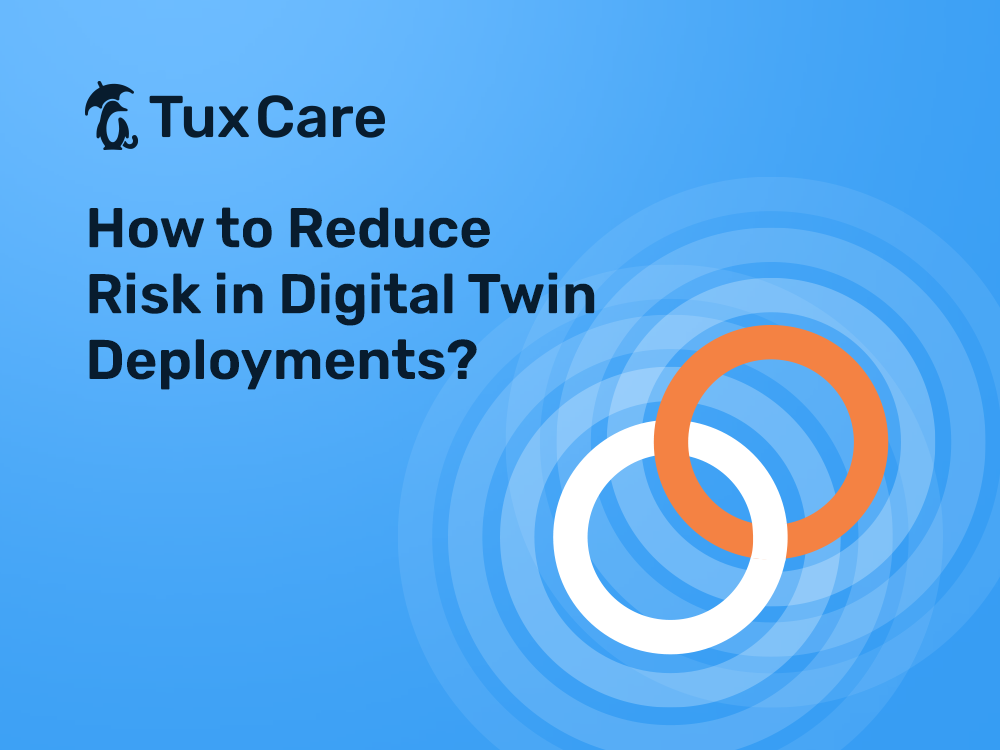How to Reduce Risk in Digital Twin Deployments
A digital twin (DT) is a virtualized representation of an actual device, and is often used in relation to operational technology (OT), industrial control system (ICS), or devices with physical limitations.
Digital twin deployments come with their own unique cybersecurity risks. In this blog post, you’ll gain an understanding of the basics of digital twins, their benefits, and how organizations can best approach securing them.
Which Industries Use Digital Twin Technology?
With advances in smart sensors and wireless networks, the Industrial Internet of Things (IIoT) has enabled us to create digital replicas of physical objects. These DT models allow us to collect much more real-world and real-time data than ever before and use that information to simulate and predict the behavior of these replicas’ physical counterparts. Thanks to these advancements, we can now develop more accurate simulation models for our physical peers and thus can better understand and predict their behavior.
Leveraging twin technologies has proven valuable for legacy OT/ICS and IIoT industrial environments, as well as for utilities – which must often manage PLUs, water control devices, or SCADA on Linux OS. Utilities can leverage virtualized or containerized DT platforms to mirror existing production devices. Patching production assets, including legacy devices and digital twins, is critical to maintaining compliance and protecting data assets across the entire organization
Benefits of Digital Twin Technology
DT deployments enable companies to get more information about their assets instantly. Two of the most valuable benefits include lower operating and capital expenditures. Better design in the early stages leads to greater returns throughout the lifecycle, since 80 to 90% of costs are incurred during the production and usage phases.
Using twin digital solutions has improved customer cooperation as well. A modern DT offers a logical way for software and possibly hardware to interact to create a simulated entire system or subsystem.
DTs are often used to test software component interactions or simulate scenarios and record results on a much larger scale. The data collected through these tests can integrate with artificial intelligence and other tools to predict outcomes and enhance software performance.
It should be mentioned that DTs carry a few drawbacks for solution and delivery architects with limited resources, as they can be expensive and complex to provision and deploy. The heterogeneous nature of the environments often proves challenging to replicate and scale, with costly and time-consuming changes and customizations.
Given the cost of the infrastructure, customers should try to maximize their underlying hardware to derive maximum value from their investment. Thus, a flexible solution is critical so that architects can create digital twins on demand that supports a variety of workloads.
What Does the Future of Digital Twins Look Like?
We are likely to see that, more often as the technology advances, we’ll be interacting much more with products, machines,buildings, factories, and cities that are virtual counterparts of real things.
The metaverse is a great example of this. Today, many people already have digital twins of themselves on the net, which interact with digital worlds just as their real-world counterparts do in their normal lives. We can expect the next generation of online devices to connect to us through 3D simulations. A metaverse unlocks an emerging economy where we can interact with our digital world.
With more and more digital twin technology being used, we can expect to see additional vulnerabilities when it comes to cyber threats.
Cyber Attacks Against Digital Twins
Hackers and cybercriminals are fully aware of the architectural weak points and known exploits against DTs, and continue to attack legacy OT/ICS devices through ransomware and denial-of-service attacks.
Before executing an attack on the legacy device network, hackers will attempt to gain access using classic OT security Linux hosts trying to control the virtual twin platform. These critical systems are susceptible to zero-day vulnerabilities and exploits, including kernel OS CVEs and application layer attacks.
Cybersecurity criminals exploit the twin platform with rootkits and other tools, then force a fail-over by attacking the legacy OT/ICS device. Upon fail-over, the hackers will control the utility control units once the virtual twin becomes the primary.
Leveraging existing cybersecurity technologies for industrial infrastructures, including live patching, micro-segmentation, zero-trust, and XDR, will help reduce the risk to twin platforms.
How to Combat Cybersecurity Threats Against Digital Twin Architectures
When deploying digital twins, one of the most critical objectives is ensuring security — not so much of the digital twins themselves, but of the objects they represent. Protecting the technical solutions deployed is crucial to setting up, deploying, and connecting digital twins.
The solution chosen should be able to achieve innate cybersecurity, so it should divide its systems into separate parts and control their communications so that an attacker cannot develop attacks against the complete solution in ways that are incompatible with the solution’s overall objectives.
Additional measures and technologies are needed to ensure the safety of a digital twin. They might include isolating the digital twin in a different subnet than the main corporate networks, installing anti-virus software, and employing different technologies such as virtualization environments and other specialized products. The exact list of measures and technologies will depend upon the particular situation and exposure to various attack surfaces against unknown threats.
Live software patching the virtual environment and physical systems within the twin architecture, which is deploying vulnerability patches in memory without needing to reboot, is also becoming popular. DevOps and SecOps engineers often support live patching solutions because these platforms help with reducing business impact during predictive maintenance cycles.
Live Patching Digital Twin Platforms
The benefits of live patching can’t be overstated. The challenge in legacy OT/ICS platforms is that clients must take only a few of these systems offline for a maintenance window, which live patching makes irrelevant because maintenance windows are no longer necessary.
With live patching technology from TuxCare, digital twin-connected devices and intelligent factory ecosystems can automatically receive the latest Linux security patches without needing to perform system reboots or schedule downtime for any components.
Beyond providing live patches for Linux hosts, databases, shared libraries, and connected devices, TuxCare’s rapid, automated IT security patching legacy extends into digital twin clients. With TuxCare, SecOps teams can now have a high degree of confidence in protecting DTs.
With TuxCare, organizations can keep their devices secure without taking them out of production. Within OT/ICS and DTs platforms, security teams can automate taking new patches through staging, testing, and display on all popular Linux distributions.
On top of automating the deployment of security patches for digital twins, TuxCare features flawless interoperability with vulnerability scanners, security sensors, automation, reporting tools, and our ePortal management platform. This dedicated private patch server runs inside your firewall on-premises or in the cloud. TuxCare is the only provider to live patch virtually all vulnerabilities in kernels, shared libraries, virtualization platforms, and open-source databases across all popular distributions.



 Documentation
Documentation Login
Login



